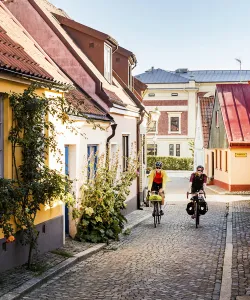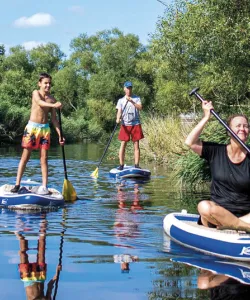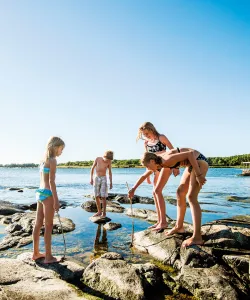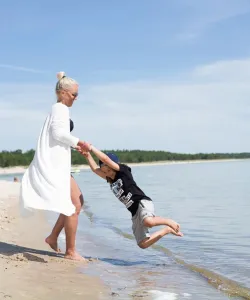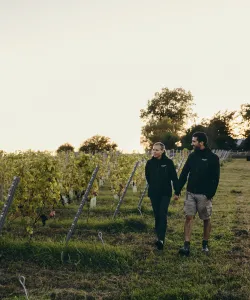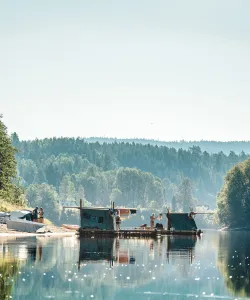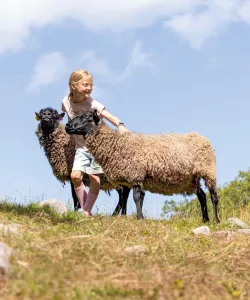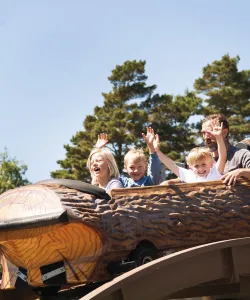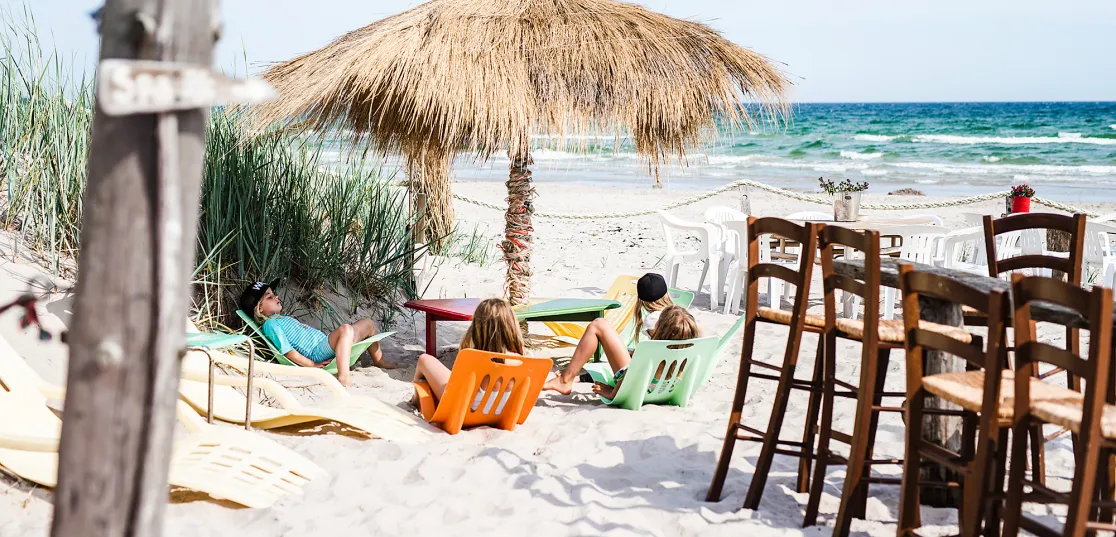
Gotland - Love at first sight
Fårö, the barren island off the northernmost point of Gotland, has one of Sweden's mast distinctive landscapes. With expansive beaches, enchantingly beautiful heaths, grand sea stacks, grazing sheep, and white limest, grazing sheep, and white limestone houses, it promises fun for the entire family.
Swedes commonly describe Fårö as "like abroad but at home". When stepping ashore a fter the short ferry ride from Fårösund to Broa, it's easy to understand why. It's like suddenly being transported to a scene straight out of the Lord of the Rings, with windmills, stone walls around pastures where sheep have grazed since time immemorial, barns capped with the island's characteristic steep thatched roofs, quaint fishing villages, and the island's unique flora and fauna. The island's culture and nature make it a national treasure.
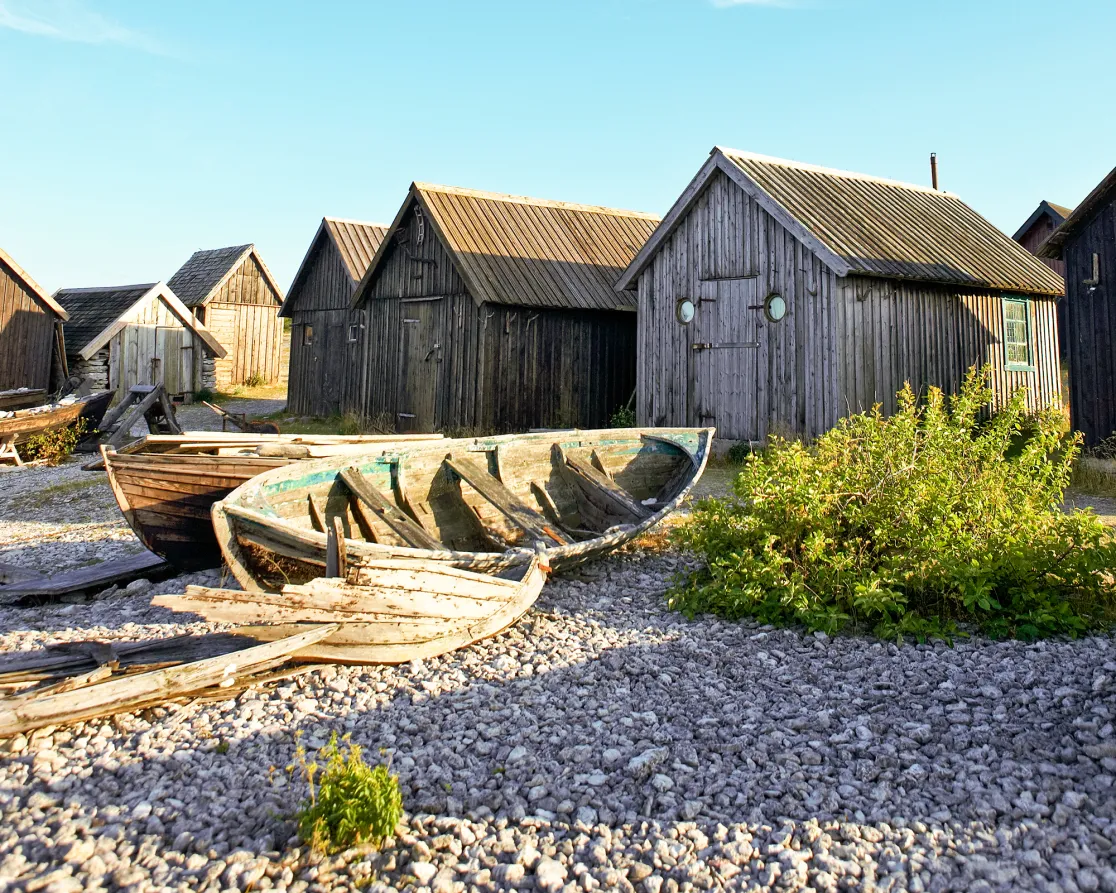
Another popular description is that the island is not a place, but rather a state of mind. If you have ever experienced the stillness of a mountain meadow in bloom or a desolate beach, accompanied only by the crashing waves and Jambs bleating in the distance, you‘ll understand why.
This state of mind is important when Tina Henriksson, the woman behind Fårö's unofficial visitor's guide, Upplev Fårö, talks about her favourite island. She thinks the Fårö magic is a feeling.
"On Fårö, I feel a calmness enter my body. It's enough to drive off the ferry in Broa to feel it."
Tina lives in Visby, on Gotland, but her roots are in Fårö, and she travels to her summer house in Verkegårds as often as she can. Her favourite activities on Fårö are close to nature and simple: evening walks to Verkegårds' fishing village, playing fetch with her dog at Jauvika, or visiting the sea stacks on a stormy day.
experience Fårö by bike or on foot
According to Fårö experts like Tina, the island's atmosphere is best experienced using simple means. Like renting a bike and pedalling along limestone-dusted roads past extremely old pines and junipers. Or strolling in the old cultural landscape. A walk in the Dämba Woods, a typical Fårö forest, is a cultural and nature experience with the remains of small sheep shelters, lime kilns, and 2,000-year-old graves.
Or packing a picnic basket (preferably filled with buttery buns and Momma cookies from the bakery Sylvis Döttrar) and setting off to find a sheltered spot by a sand dune at Norsta Aurar and spend the day buried in soft sand. Or why not see the island from the back of an lcelandic horse tolting in the frothy sea. The agency Fårö Islandshästar arranges tours year-round. Fårö should be experienced with all five senses!
"Fårö is both described and experienced as something magical and unusual. The island ofers a sense of calm, and it's a place where everyone can find their own treasure. Most people would stay for their entire life if they could," says David Ruthström, a Fårö resident and energetic entrepreneur who runs Sudersands Vintage Cykeluthyrning, a bike rental shop.
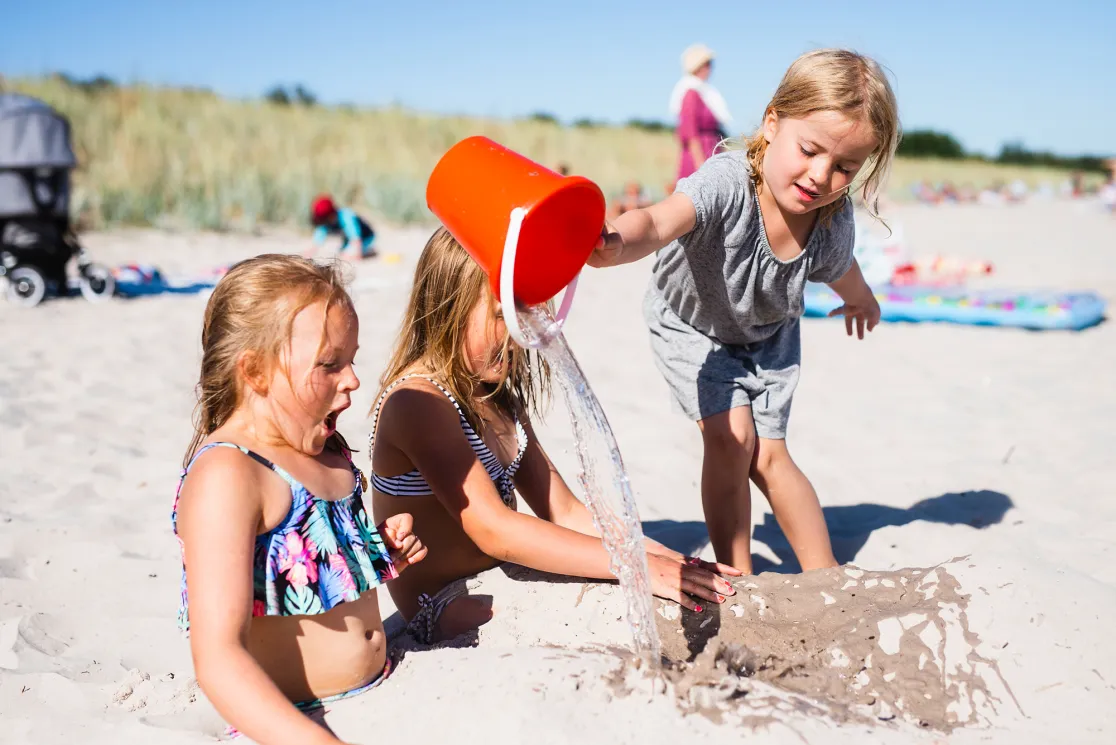
Beaches unilke any other
Someone once said that Fårö can be found between the sea, the sky and the beach, and a t least one visit to a beach is a must to understand the isla nd. The beaches on the north-eastern shoreline are magnificent! Every year, Sudersand is named not just one of Gotland's top beaches but also one of the top beaches in the world. Fine, white sand anda shallow, rippled sand sea bottom make the beach immensely popular. Stretching for three kilometres, it has room for everyone!
Sudersand offers a full range of amenities from restaurants to a gym - but Fårö also has natural beaches that with their simplicity promise views of a still horizon. Skalasand, only a Viking stone disc's throw from Sudersand, is appealing with its desolate beauty, but be aware of its treacherous underwa ter currents! Norsta Aurar, a 4-km beach between Skärsände and Fårö Lighthouse is known as Fårö's slightly "wilder" beach, with colder water, sand dunes, and nude bathers. The swimming waters at Ekeviken bay are also shallow, sandy and expansive. The bay is also home to a sea rescue museum (Fårö Sjöräddningsmuseum), including a 130-year-old boat from the island's proud sea rescue history. The crew, consisting of Fårö residents, rescued in total 200 wrecked ships between 1861 and 1943.
Pittoresque fishing villages and unique nature
Close to Ekeviken is Norsholmen, a peninsula and bird sanctuary, perfect for exploring by foot or bike since motorised vehicles are banned. It's like being transported back in time: sheep and cattle graze peacefully and the only human traces are an abandoned limestone quarry, some weathered beach huts, the ruins of a cemetery, and a rusty ship that sinks further into the sea for every year that passes.
There are kid-friendly beaches, sand dunes to run in, sea stacks to explore"
Fårö's unusual nature means unusual playgrounds.
"There are kid-friendly beaches, sand dunes to run in, sea stacks to explore. Visit Digerhuvud and Jet the children climb around, and bring a picnic or grill at one of the barbecue areas there," recommends Tina.
Digerhuvud Nature Reserve, close to Lauter's guest harbour, is Gotland's largest sea stack field. To the north is the beautiful fishing village Helgumannen, with its tightly packed fishing huts that were once Fårö's most important source of herring. Two of the huts a re built in the prehistoric tradition.
Passing Helgumannen and following the cobblestone beach to the north brings visitors to Langhammars Nature Reserve, acclaimed for its sea stacks, which are depicted on the Swedish 200-kronor bill, and beautiful sunsets
Ulla Hau Nature Reserve close to Sudersand is a gig ntic sand dune that could have become a desert if Fårö resident Marcus Larsson had not successfully bound the shifting sand by planting trees at the beginning of the 1900s. Unusual insects live here, such as the antlion, which waits for its prey in small holes in the sand.
"At Ulla Hau, the children can run around in the hills of sand. A spontaneous "village" of rubber duckies has appeared, which can make a fun treasure hunt for the kids," says Tina.
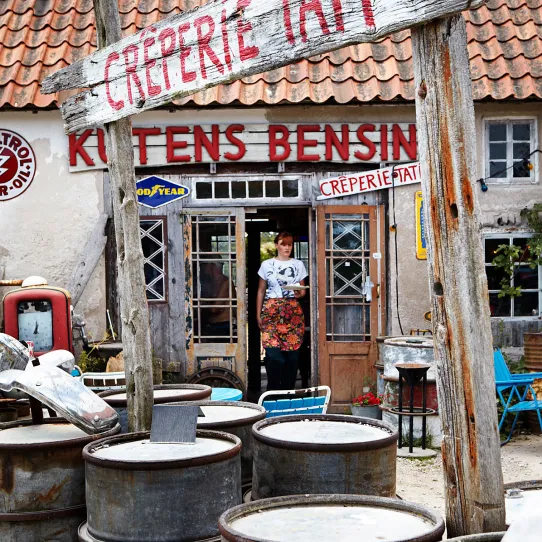
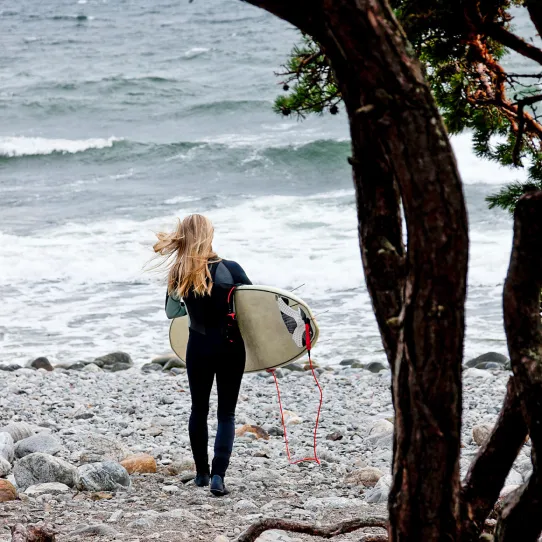
culture barns and personal plates
Fårö is home to several restaurants and cafes, some with a very personal feel, as befits a wilful island. In the village of Friggars, Fårö residents Thomas "Kuten" Lindholm and Valeriane Placier operate a small empire with an improbable atmosphere where France meets Elvis Presley and grandma's lace curtains, enhanced with Gotland history and Fårö romance. Creperie Tati, Elsies Cafe, Bistro Albatross and Kutens Bensin are all worth a visit.
"Elsies Cafe is charming and has lots of character. It serves a lovely pot of hot chocolate with heavy cream, and don't miss the home-made bread with Brie and Serrano ham," says Tina.
EXCELLENT ENTERTAINMENT
Fårö may be small, but the entertainment is excellent, and much of it is arranged in a typical Gotland manner - in barns! The red cinema in Sudersand, an old cow barn converted in the 1950s, is open all summer long. Another barn, this one at Stora Gåsemora, has hosted sold-out concerts for a decade, featuring Sweden' s biggest names in its Summer Night at Stora Gåsemora series, and when lines of shiny 1950s cars drive off the ferry, you know it's time for rock'n'roll in the barn at Kutens Bensin.
No one who visits Fårö can miss that the spirit of the world-famous director Ingmar Bergman hovers over the island. Bergman Center, in the middle of Fårö, has exhibitions of his work and his strong ties to the isla d. Play chess in the beautiful library. Bergman Center also arranges guided bus tours to Bergman's recording locations around the island.
Ingmar Bergman fell in love with Fårö at first sight, and who knows? You might, too!
MORE TIPS NEARBY
ACCOMODATION ON FÅRÖ AND GOTLAND
Selected filters:

